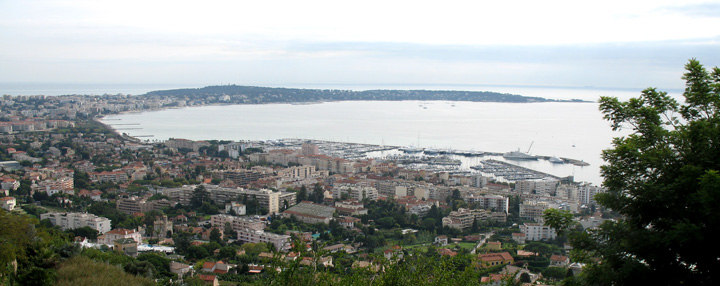VALLAURIS / GOLFE-JUAN / CANNES
At the time, Golfe-Juan had only some forty inhabitants, fishermen and farmers, a dozen houses and a few pottery warehouses. The beach was in its natural state. It took a few hours on 1 March for the men, horses and armament to reach land. Thus, Golfe-Juan entered History! On the evening of 1 March, Napoleon entered Cannes along the coastal road. The town was known only for the Isles of Lérins in its Bay: the Isle of Sainte-Marguerite and its Royal Fort (where the Man in the Iron Mask was once imprisoned); the Isle of Saint-Honorat and its famous Monastery.
Today, Golfe-Juan is the coastal district of Vallauris, a village renowned for its culinary pottery, which became artistic in the 20th century. The commune earned the “Ville & Métiers d’Art” label. Its most famous ambassador was Picasso, who created nearly 3,500 pieces from 1948 to 1973. Every year, the “International Biennale of Vallauris – Contemporary Ceramic Creation” displays works by French and international artists in the Château-Musée Grimaldi.
Cannes no longer needs any introduction, with its famous Film Festival, the event with the most media coverage in the world after the Olympic Games.

NAPOLEONIC LANDMARKS:
• Plage du Débarquement (beach) – Golfe-Juan
• Stele to Napoleon on the Old Port – Golfe-Juan
• Rue du Bivouac Napoléon – Cannes: commemorative plaque on the wall of Notre-Dame du Bivouac church recalling the exact place where Napoleon bivouacked for a few hours before setting off for Grasse.
To discover: four of nine cannonball kilns dating from Napoleonic times on the Isles of Lérins in the Bay of Cannes
Useful Addresses
- • Hôtel Beausoleil*** Golfe-Juan
- www.hotel-beau-soleil.com
- • Hôtel de la mer*** Golfe-Juan
- www.hotelmer.com
- • Hôtel on Rue du Bivouac Napoléon – Cannes:
- Hôtel Alizé www.hotel-alize-cannes.com
- • Tétou – Golfe-Juan : www.tetou.fr
- • Nounou – Golfe-Juan : www.nounou.fr
- In the vicinity:
- • Imperial Suite at Hôtel Negresco, an emblem of luxury on the French Riviera!
- www.hotel-negresco-nice.com

